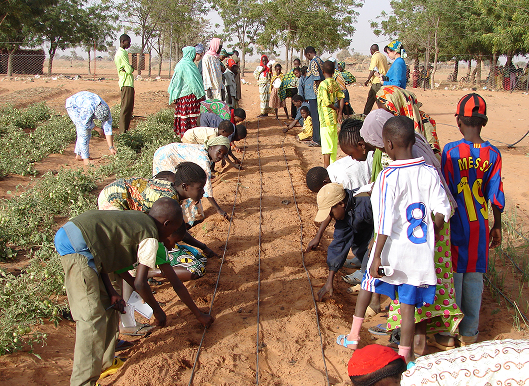Submitter: ICRISAT
Cropping system design, based on resource availability and crop water requirements, is a strategic approach to selecting and organizing crops that match local soil, water, and climatic conditions. It addresses the problem of inefficient water use and resource mismatch in agriculture, helping to improve yields, conserve water, and enhance sustainability under variable environmental conditions. Below are the components:
i) Characterization of soil biophysical properties
ii) Mapping of existing cropping systems, including horticulture and plantation crops
iii) Retrieve the meteorological data and management practices, and estimate crop water requirements
iv) Estimate freshwater availability of the landscape and estimate the demand-supply gap
v) Design a suitable cropping system based on resource availability

Cropping system design based on resource availability and crop water requirements is a practical approach that ensures agricultural practices are tailored to local environmental conditions. By integrating data on soil biophysical parameters, water availability, and crop water needs, this system promotes efficient use of land and water resources. Key features include optimized crop selection, improved water use efficiency, and alignment with seasonal rainfall and irrigation potential. The benefits range from enhanced productivity, reduced input costs, and greater resilience to climate variability. This makes it a valuable strategy for sustainable and resource-efficient farming, and also identifies the hotspots of increasing water-energy and carbon footprints.
This approach is practical for a broader range of regions, where water scarcity and variable rainfall make resource-efficient planning crucial. It is already being applied in watershed management programs and integrated farming systems where resource constraints demand careful planning. Additionally, it holds strong potential for broader adoption in irrigated zones facing groundwater depletion and areas vulnerable to climate change. Its adaptability to diverse agroecologies makes it suitable for both smallholder and large-scale farming systems seeking to balance productivity with sustainability.
Cropping system design based on resource availability and crop water requirements has demonstrated measurable improvements in both productivity and resource use efficiency. For example, in OPELIP clusters of Odisha, it was implemented successfully, with farmers reporting yield increases of 15–30% due to better crop-soil-water alignment. Water use efficiency has significantly improved, with reductions in fallow lands by 20–40%. Additionally, the approach has led to improved groundwater recharge, reduced the risk of crop failure during dry spells, and increased resilience to climate variability. These results highlight its effectiveness in enhancing farm profitability while promoting long-term sustainability.
In the absence of a cropping system design based on resource availability and crop water requirements, there is often overutilization or underutilization of key resources, such as water. For example, in the drylands of the semi-arid tropics, rice-wheat and sugarcane cultivation often result in water use exceeding availability, leading to a negative water budget and long-term resource depletion. This not only threatens sustainability but also reduces resilience to climate variability. Designing cropping systems that align with local water availability and crop water needs ensures more efficient use of resources, prevents over-extraction, and supports sustainable production. To adopt this approach at scale, access to local water and soil data, decision-support tools, and farmer training is essential, along with supportive policies and institutional collaboration.